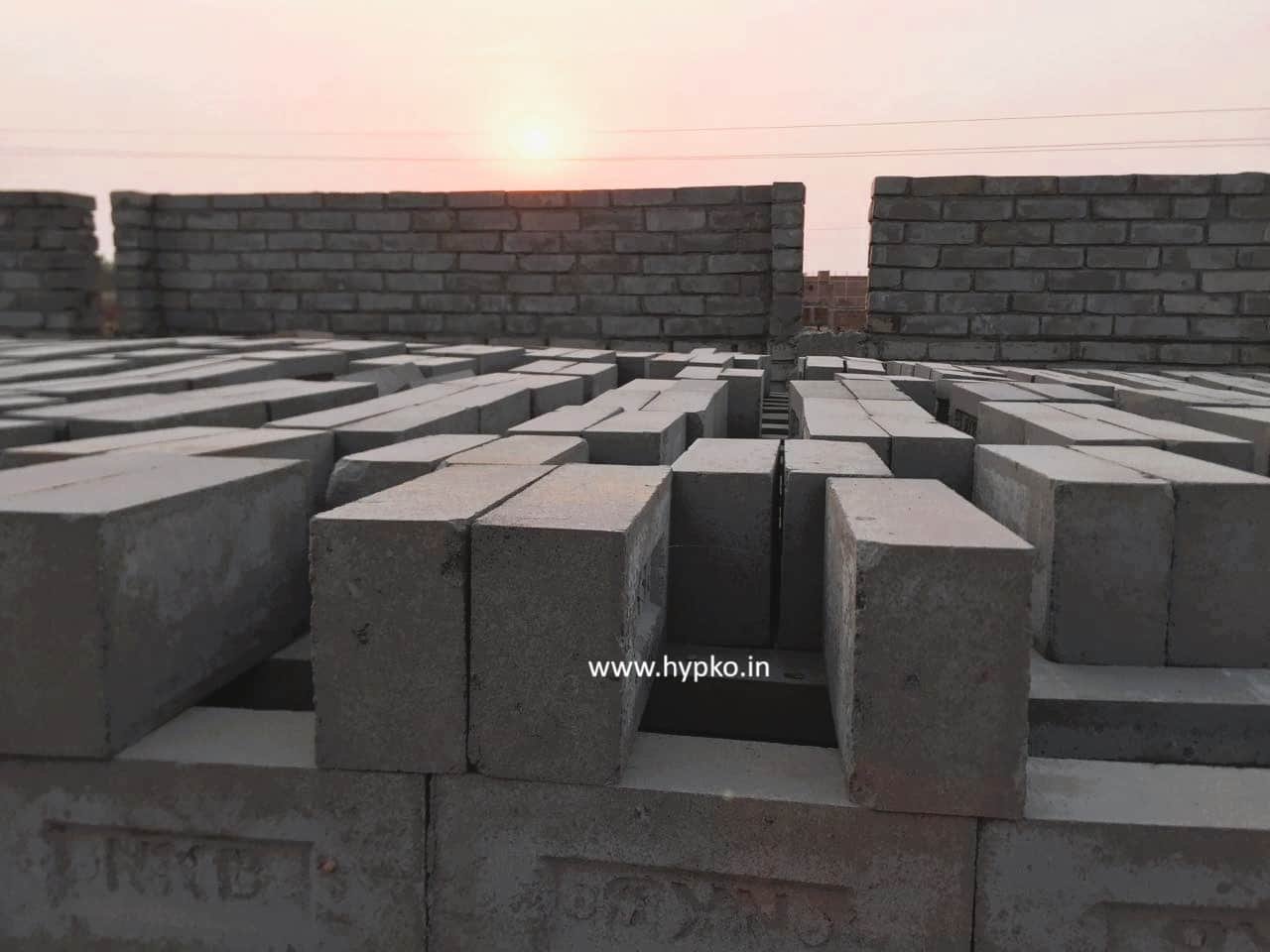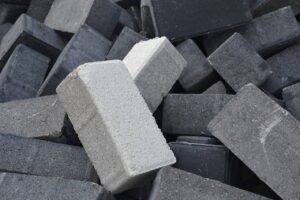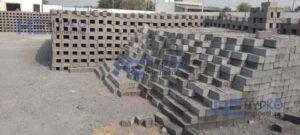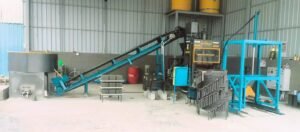Cement bricks (commonly referred to as concrete bricks) are durable building materials crafted by mixing cement, sand, and water together in a molded form. Cement bricks have long been known for their strength, versatility, and endurance making them popular choices in modern construction projects.
Importance and Applications in Modern Construction
Cement bricks play an integral role in the construction industry. Their robustness and adaptability enable them to be used in building homes, commercial structures and industrial facilities due to their fire resistance, sound insulation and load bearing capacities; making them essential components of creating sustainable buildings that ensure safe environments.
Overview of Article
This article presents a comprehensive examination of cement bricks, including their types, manufacturing process, advantages and disadvantages as compared to other bricks, common uses, installation and maintenance, sustainable practices, regulatory standards, economic impact analysis and future prospects as well as answers to frequently asked questions (FAQs).
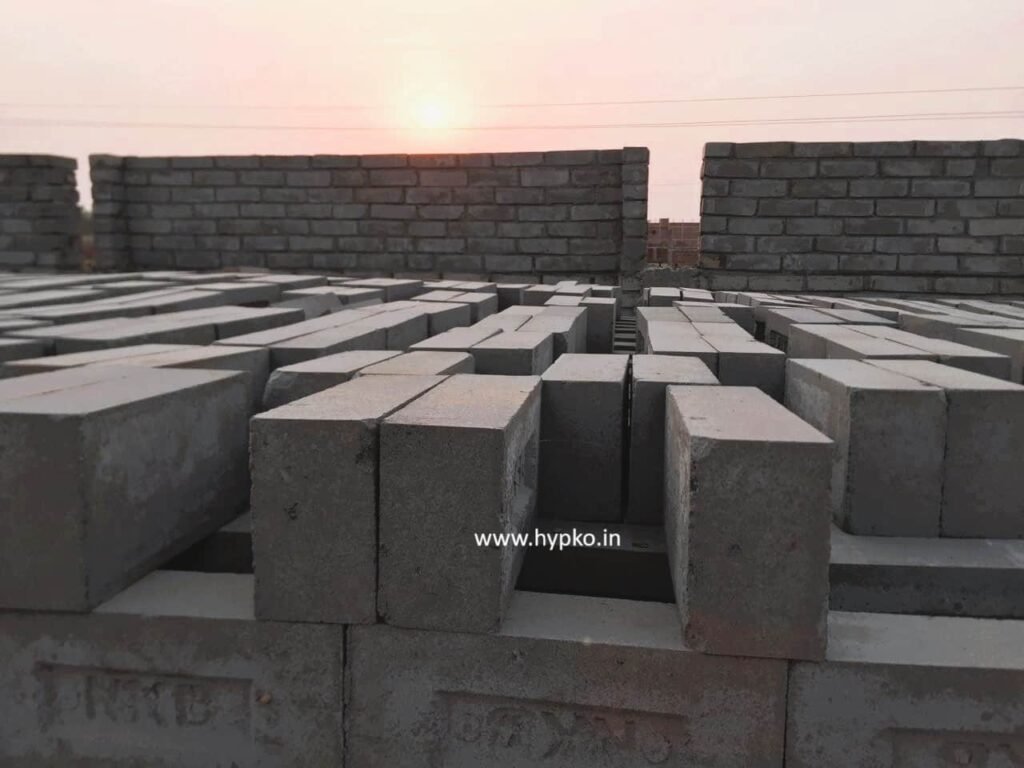
Topics of Discussion
Types and Categories
Solid Cement Bricks
Solid cement bricks are dense and sturdy materials that make them suitable for load-bearing walls and other structural components, offering great sound insulation properties as well as having high thermal mass for energy efficiency.
Hollow Cement Bricks
Hollow cement bricks feature cavities to reduce weight and increase insulation, making them suitable for partition walls and non load-bearing structures, providing benefits like easier handling and improved thermal performance. They’re commonly found in partition walls as divider walls.
Fly Ash Cement Bricks
Fly ash cement bricks are eco-friendly solutions created from mixing fly ash with cement, sand and water for strength and durability with reduced environmental impacts. These eco-friendly bricks are great solutions that use industrial waste material while providing strong construction with reduced environmental impacts and strong strength and durability benefits.
Concrete Bricks
Concrete bricks resemble solid cement bricks but may contain additional materials like gravel. As they can be found anywhere from pavements to buildings, their versatility makes them useful construction tools.
Size and Shape Classification System
Cement bricks come in various sizes and shapes to meet various construction needs. While standard sizes include 230x110x70 mm and 190x90x90 mm, custom dimensions can also be manufactured to suit particular projects.
Manufacturing Process
Raw Materials
Cement bricks can be produced using cement, sand and water as their core ingredients. Fly ash, gravel or other aggregates may also be added for enhanced properties of the bricks.
Mixing Process
Raw materials are carefully mixed in precise proportions to maintain consistent quality, then thoroughly blended until achieving a uniform texture.
Molding Techniques
Mixed material is poured into molds to form desired shapes and sizes. Modern techniques use automated machines that ensure uniformity and increase production rates.
Curing Methods
Curing is essential to achieve strength and durability of bricks. They should be placed in controlled environments with appropriate moisture levels for several weeks to allow full cement hydration.
Quality Control Measures
Strict quality control measures are implemented during each stage of production to ensure that bricks meet required standards for strength, durability and dimensional accuracy. Testing procedures may include strength tests as well as dimension checks.
Advantages
Durability
Cement bricks offer many advantages when used indoors or outdoors, including their durability and weather-resistance, making them suitable for both interior and exterior applications.
Strength
Cement bricks offer excellent compressive strength, making them ideal for load-bearing structures that ensure stability and longevity in buildings.
Fire Resistance
Cement bricks offer excellent fireproofing qualities, increasing building safety.
Sound Insulation
Cement bricks provide excellent sound insulation properties, making them suitable for use in both residential and commercial properties to reduce noise pollution.
Cost-Effectiveness
While initial costs for cement bricks may be higher than alternative solutions, their long-term advantages of durability, low maintenance costs, and energy efficiency make them highly cost-effective investments.
Environmental Benefits
Cement bricks can be produced using recycled materials like fly ash, which reduces their environmental footprint. Their long lifespan and energy efficiency also make them sustainable options.
Disadvantages
Weight
Unfortunately, cement bricks tend to be heavier than some other forms of bricks and this makes their handling and transportation more complex.
Thermal Conductivity
Cement bricks possess greater thermal conductivity compared to AAC blocks, leading to higher energy costs associated with heating and cooling.
Initial Cost
Cement bricks typically carry higher upfront costs than their traditional clay counterparts, potentially jeopardizing budget-sensitive projects.
Limitations in Aesthetic Appeal
Cement bricks typically possess an unattractive surface texture that may not suit projects requiring aesthetic value without additional finishes or treatments.
Comparison with Other Types of Bricks
Clay Bricks Vs Cement Bricks
Clay bricks are made from natural clay, and are known for their aesthetic appeal and natural insulation properties. However, these bricks tend to be less durable and possess lower compressive strengths compared to cement bricks.
Fly Ash Bricks Vs Cement Bricks
Fly ash bricks are eco-friendly bricks made from industrial waste. Lighter than cement bricks and providing better insulation than its counterpart, fly ash may still have load bearing capacity but may differ in this respect.
AAC Blocks vs. Cement Bricks
Autoclaved Aerated Concrete (AAC) blocks are lightweight, provide excellent thermal insulation and can easily be handled, yet are more costly and less durable than cement bricks.
Common Uses of Cement Bricks
Cement Bricks for Residential Construction
Residential buildings utilizing cement bricks often rely on them to construct strong and sturdy walls, foundations and other structural components that protect residents from extreme temperatures or other potential risks.
Commercial Buildings
Cement bricks provide commercial structures with strength, fireproofing and sound-absorbing qualities which make them the ideal material choice for offices, malls and other spaces that demand strength and sound insulation properties.
Industrial Buildings
Cement bricks’ durability and load-bearing capacity makes them an excellent choice for industrial structures like warehouses and factories.
Landscaping and Garden Projects
Cement bricks have long been used in landscaping to create pathways, retaining walls and decorative garden features due to their durability and aesthetic flexibility.
Roads and Pavements
Cement bricks provide a durable and cost-effective solution for urban infrastructure construction projects, making roads and pavements both durable and cost-efficient to create.
Installation and Maintenance
Site Preparation
Proper site preparation, including leveling and compacting the ground, is essential for the effective installation of cement bricks.
Laying Techniques
Cement bricks should be laid using appropriate techniques in order to ensure their stability and alignment, such as staggered joint patterns and proper mortar application.
Mortar Application
Selecting and applying mortar correctly are critical components of cement brick structures, with each batch blended to the appropriate consistency before evenly spreading across their surfaces.
Maintenance Tips
Regular inspection and maintenance, including cleaning and repairing any damaged bricks or mortar joints, will extend the life of cement brick structures.
Sustainable Practices
Recycling and Reuse
Cement bricks can incorporate recycled materials, such as fly ash, while old bricks may be crushed and reused in new projects.
Energy Efficiency
Cement bricks’ thermal mass helps regulate indoor temperatures more naturally, decreasing the need for artificial heating and cooling, thus saving energy.
Reducing Carbon Footprint
Innovations in manufacturing processes and the use of alternative materials can dramatically decrease the carbon footprint associated with cement brick production.
Innovations in Sustainable Cement Bricks
New technologies and materials are being created to produce more eco-friendly cement bricks, such as low-carbon cements and advanced curing techniques.
Future of Cement Bricks
Technological Advancements
Advancements in manufacturing technology, such as automation and using alternative materials, are helping cement brick manufacturers produce higher-quality and more eco-friendly bricks.
Emerging Trends
Trends like green building practices and energy efficient materials are shaping the future of cement bricks.
Potential Innovations
Future innovations could include self-healing bricks, using nanotechnology to enhance material properties and creating carbon neutral bricks.
Frequently Asked Questions (FAQs)
What are cement bricks made of?
Cement bricks are made from a mixture of cement, sand, water, and sometimes additional materials like fly ash or gravel.
How do cement bricks compare to traditional clay bricks?
Cement bricks offer superior strength, durability, and fire-resistance to clay bricks; however, they tend to be heavier and have greater thermal conductivity.
Are cement bricks environmentally friendly?
Environmentally friendly cement bricks can be produced using recycled materials and energy-saving manufacturing processes.
What are the common applications for cement bricks?
Cement bricks are widely used in residential, commercial, and industrial buildings as well as landscaping applications like roads and pavements.
How long do cement bricks last?
As long as they are maintained properly, cement bricks can last decades when properly maintained – providing an economical and durable building material for decades of use.
Can cement bricks be used for load-bearing structures?
Yes, cement bricks have high compressive strength, making them suitable for load-bearing structures.
What are the maintenance requirements for cement bricks?
Maintenance of cement brick structures depends upon routine inspection, cleaning and repair of bricks and mortar joints in their structure. This should include regular checks for damaged bricks or damaged mortar joints which need repair or replacement.
How are cement bricks manufactured?
Cement bricks are produced by mixing together cement, sand, water and any additional ingredients before shaping and curing them under controlled conditions.
Are there different types of cement bricks?
Yes, there are multiple varieties, such as solid cement bricks, hollow cement bricks, fly ash cement bricks and concrete bricks – each type with their own specific properties and uses.
What are the advantages and disadvantages of cement bricks?
Advantages include durability, strength, fireproofing and cost-effectiveness, while disadvantages may include weight, thermal conductivity and initial cost.
Conclusion
Summary of Key Points
Cement bricks are an economical and versatile building material with numerous applications in modern construction. Their benefits include strength, fireproofing properties and environmental benefits – yet some disadvantages such as weight and thermal conductivity may exist.
Final Thoughts and Recommendations
For those looking to build strong, durable, and sustainable structures, cement bricks are an excellent choice. By understanding their properties, manufacturing process, and best practices for installation and maintenance, one can maximize the benefits and minimize the drawbacks of using cement bricks in construction projects.

